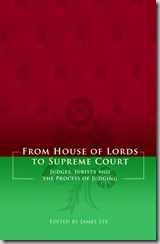Long Life ATS
American ATS is far from being dead: that’s true both from the standpoint of academics and practitioners. Only two days ago, on Tuesday, Gilles announced a new article on the Statute. Less than a month after a paper of my own called “Responsabilidad civil y derechos humanos en EEUU: el fin del ATS?” was published, I learned about a new title from O. Murray, D. Kinley and C. Pitts: “Exaggerated Rumours of the Death of an Alien Tort? Corporations, Human Rights and the Remarkable Case of Kiobel” (Melbourne Journal of International Law, vol. 52). The summary reads as follows:
Over the past 15 years or so, we have become accustomed to assuming that corporations are proper subjects of litigation for alleged infringements of the ‘law of nations’ under the Alien Tort Statute (‘ATS’). But, in a dramatic reversal of this line of reasoning, the United States Court of Appeals for the Second Circuit in Kiobel v Royal Dutch Petroleum (‘Kiobel’),2 has dismissed this assumption and concluded that corporations cannot be sued under the ATS. This article explores the Court’s reasoning and the ramifications of the decision, highlighting the ways in which the Kiobel judgment departs from both Supreme Court and Second Circuit precedent. The authors take to task the critical failure of the majority in Kiobel to distinguish between the requirements of legal responsibility at international law and that which is necessary to invoke ATS jurisdiction in the US District Courts. In the context of the maturing debates over the human rights responsibilities of corporations, the authors point to the political as well as legal policy implications of Kiobel and underscore the reasons why the case has already attracted such intense interest and will continue to excite attention as a US Supreme Court challenge looms.
And these are the main issues addressed:
.- the source of law for causes of action under the ATS (does the ATS create a statutory cause of action, does it grant jurisdiction to federal courts to recognise federal common law causes of action, or does the ATS only permit the recognition of causes of action that exist in international law?); and
.- the debate regarding secondary liability: critics to the adoption by the Second Circuit of international law as the source of law for determining the rules on secondary liability under the ATS, and the conclusion of the majority in Kiobel (there is no norm of corporate liability in customary international law, and therefore there can be no liability of corporations under the ATS).
Kiobel has also been delt with in Spain by professor Zamora Cabot (University of Castellón), an ATS expert: see here his last paper, which will soon be published in English.
As for the judiciary: a petition for writ of certiorari was filed on June, 2011, to review the Kiobel judgment of the United States Court of Appeals for the Second Circuit, entered on September 17, 2010.
I would conclude that the ATS has a “mala salud de hierro” (prognosis: ill, but still a long way to go).


